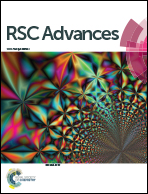Chemical–mechanical properties of tribofilms and their relationship to ionic liquid chemistry
Abstract
The relationship between ionic liquid (IL) chemistry and tribological properties, such as coefficient of friction, wear and chemical–mechanical properties, of tribofilms is examined. In this study, six phosphorous (P) based ILs (in which P is present either in the anion or cation or in both) were chosen to examine the role of different cations and anions. The six ILs used as additives were blended in group I base oil at 0.1 wt% P treatment rate and their tribological performance was evaluated using cylinders in a reciprocating flat test configuration in pure sliding contact. Tests using ZDDP at 0.1 wt% P and base oil were also conducted for baseline comparison. All ILs exhibited comparable or lower coefficients of friction compared to ZDDP, which has a higher but consistent coefficient of friction for the duration of the test. IL N_DEHP and P_TFSI exhibited comparable or slightly better wear protection compared to ZDDP, whereas N_DBDTP, P_TMPP, P_DMP and P_DEDTP exhibited worse wear results than ZDDP. XANES analysis of pure IL standards and their tribofilms indicates that the tribofilms from ILs are the result of decomposition of the IL and reaction of these decomposition products with the underlying steel substrate. No residues of the original IL were found on the wear tracks. Nano-indentation results indicated that tribofilm hardness increases from the surface towards the bulk of the films, which when combined with P L-edge spectra indicate that short chain phosphates formed at the surface result in lower hardness than medium chain phosphates formed in the bulk.


 Please wait while we load your content...
Please wait while we load your content...